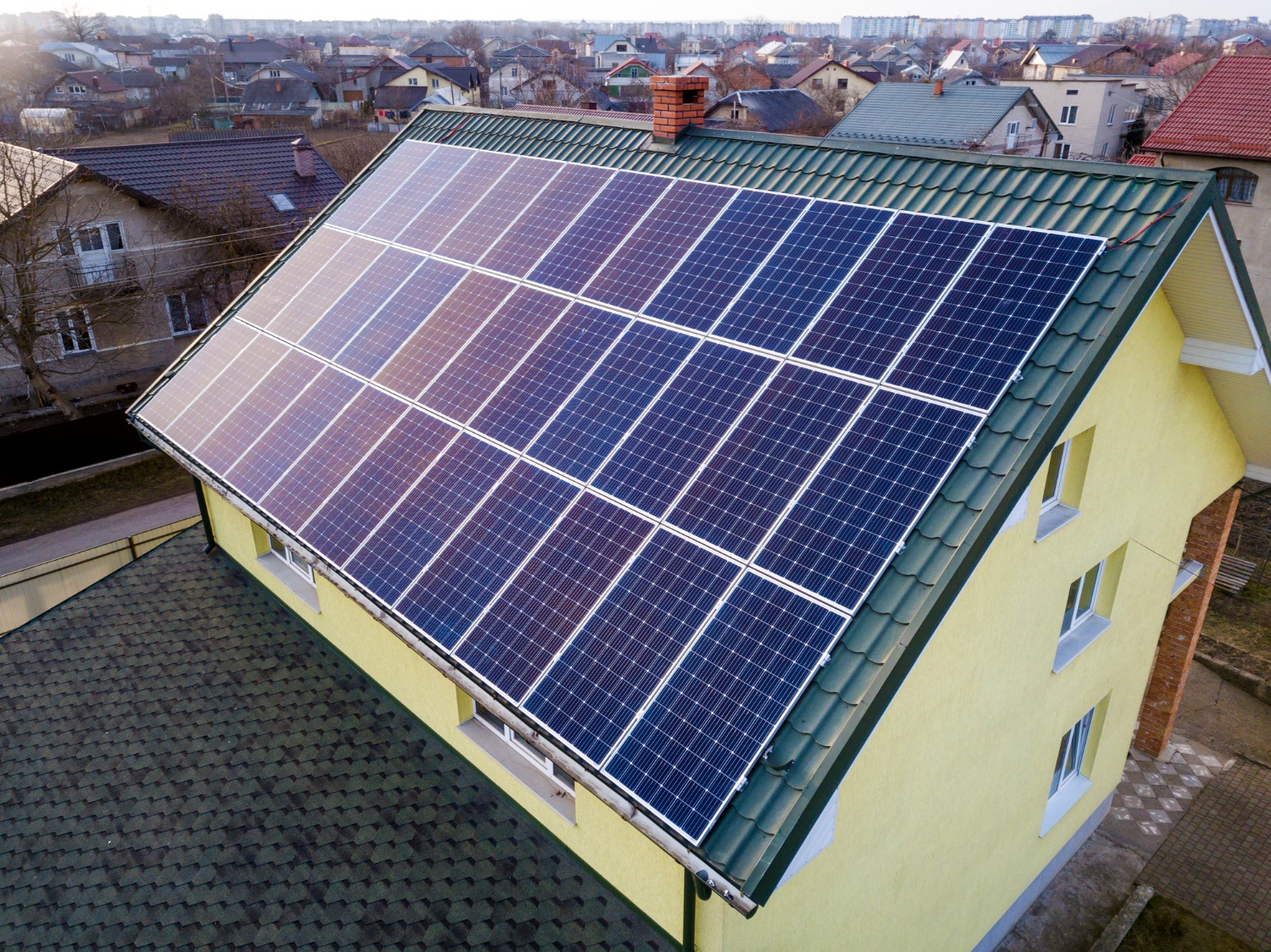Solar energy is quickly rising to prominence in the world’s energy market. It has been one of the most promising forms of renewable energy in recent years. Solar power has become a major focus for governments, companies, and investors all over the world due to the rising interest in renewable energy sources and the requirement to lower greenhouse gas emissions.
Solar energy is anticipated to play a major role as the world moves towards a sustainable energy future.
Since solar energy’s conception, technology has advanced significantly, and discoveries are constantly being made to raise its effectiveness, dependability, and affordability. The efficiency and cost-effectiveness of solar energy are fast increasing, making it a more attractive alternative for large-scale energy production. We’ll look at a few of the fresh ideas and developments that are reshaping the solar energy sector in this blog post.
Floating solar panels
The creation of floating solar panels is one of the most interesting developments in the solar sector. Solar panels can now be mounted on water-bodies including lakes, reservoirs, and even the ocean thanks to technological advancements. Compared to conventional land-based solar arrays, floating solar panels provide several advantages. They don’t occupy important land space, for starters.
Additionally, the cooling impact of the water can aid in improving the solar panels’ efficiency, leading to better energy output. The water also acts as a natural cleaning agent, which can help to lower maintenance costs. They can also aid in lowering water evaporation, which is crucial in arid areas.
Building integrated photovoltaics
BIPV, also known as building-integrated photovoltaics, is another innovative invention in the solar sector. With this technology, solar panels are incorporated into the design of the building itself so that they blend in seamlessly. This can be done in some ways, such as installing solar skylights or windows or utilising solar shingles or tiles. Compared to conventional solar panels, BIPV has many benefits, including better aesthetics, greater energy efficiency, and lower installation costs.
Perovskite solar cells
Another cutting-edge technology that is getting a lot of interest in the solar energy sector is perovskite solar cells. It is a form of solar cell known as a perovskite solar cell that substitutes perovskite for silicon in its construction. Despite being a relatively young substance in the solar sector, perovskite has already demonstrated tremendous promise.
As they can absorb a wider range of the sunlight spectrum than conventional silicon solar cells, perovskite solar cells have the potential to be more effective. These have lower production costs. Since they can be printed on a variety of surfaces, they are also simpler to produce. They are a great option for a variety of applications, including portable electronics and photovoltaics that are integrated into buildings, because they are lightweight and flexible.

Concentrated solar power
Through the use of mirrors or lenses, concentrated solar power, also known as CSP, harnesses sunlight that is focused onto a tiny area to produce heat. Using this heat, steam is created, and the steam powers a turbine to produce energy. In locations with strong solar radiation, such as deserts, CSP technology is especially helpful.
CSP facilities are capable of producing a big amount of electricity and can be constructed on a massive scale. Compared to conventional solar panels, CSP provides some benefits, including larger energy output and the capacity to store energy for use at a later time. The use of molten salt as the heat transfer fluid in CSP, which enables even larger energy storage capacities, is one of the most interesting breakthroughs in this field.
Solar-powered desalination
To make seawater drinkable, desalination involves removing salt and other minerals. This technology is crucial for areas without access to fresh water. However, a lot of energy is needed for desalination, and this energy is often obtained from fossil fuels. An exciting discovery is solar-powered desalination, which uses solar energy to power the desalination process. Millions of people could have access to safe drinking water because of this technology.
Thin-film solar cells
A potential technology that is quickly gaining traction in the solar energy sector is thin-film solar cells. Thin layers of semiconducting materials are layered on a substrate, such as glass or plastic, to create these cells. In comparison to conventional solar cells, thin-film solar cells are cheaper to build, lighter, and more flexible. They are a great option for cloudy or overcast situations because they are more effective in low light. Numerous products, including building-integrated photovoltaics, portable devices, and even clothing, use thin-film solar cells.
Artificial photosynthesis
A process called artificial photosynthesis imitates natural photosynthesis, which is how plants turn light, carbon dioxide, and water into energy. In artificial photosynthesis, sunlight is collected and transformed into chemical energy, such as hydrogen or other fuels, using technology.
Sunlight is used as the energy source to split water molecules into their parts, hydrogen, and oxygen. The hydrogen can then be utilized as a clean fuel for a variety of purposes, including running homes and cars. A clean, plentiful, and renewable source of fuel could be made available through the development of artificial photosynthesis, which could completely alter the renewable energy sector.
Solar energy storage
The intermittent nature of solar energy is one of its key drawbacks. Because solar panels can only produce electricity while the sun is shining, energy storage is crucial to ensuring a steady supply of electricity. As they enable excess energy to be stored during the day and used when the sun isn’t shining, battery storage devices are growing in popularity in the solar energy sector. Thermal storage, which utilizes heat to store energy, and flywheels, which use spinning discs to store kinetic energy, are two more forms of energy storage technologies being researched for solar energy.
Solar tracking systems
Systems called solar tracking systems move solar panels to track the sun’s movement throughout the day. As a result, solar panels may produce more electricity by absorbing more sunlight. Modern solar tracking systems optimize the movement of the panels by utilizing artificial intelligence in some systems. This can boost solar panels’ efficiency by up to 30%, making them a more affordable option for generating electricity.
Transparent solar
It is a technology that makes it possible to incorporate solar panels into windows, building facades, and other transparent surfaces. Traditional solar panels can’t be used in buildings or other applications where transparency is preferred since they are opaque and impede light. Transparent solar panels are constructed from a material that absorbs solar energy from ultraviolet and infrared light while permitting visible light to pass through.
This innovation would make it possible for buildings to produce their electricity while still letting in natural light, revolutionising the way we produce and use solar energy. Other potential uses for transparent solar include mobile technology and transportation. So, this appeals to be a part of our buildings in such a form that swings both ways in performance.
Conclusion
In conclusion, the solar energy business has a bright future ahead of it as several cutting-edge new technologies and developments are on the horizon.
Artificial photosynthesis, which imitates the natural process by which plants transform sunlight into energy, is one of the most fascinating new technologies. Another technology, transparent solar, might transform the market by enabling solar panels to be integrated into transparent surfaces like windows and building facades.
The way we produce and use solar energy is also evolving as a result of other recent innovations, including concentrated solar power, solar tracking systems, thin film solar cells, and solar energy storage. Solar energy has a greater potential than ever before to significantly contribute to the reduction of our reliance on fossil fuels and the shift to a sustainable energy future as these technologies advance and become more affordable. Didn’t this sound cool to have such an emerging technology that will fulfill our needs and also help our environment by reducing our carbon footprint?
In the upcoming years, we can anticipate continued expansion and innovation in the solar energy sector thanks to ongoing research and development in many innovative technologies. We can build a cleaner, healthier, and more wealthy society for ourselves and future generations by embracing these new technologies and moving towards a more sustainable energy future.





